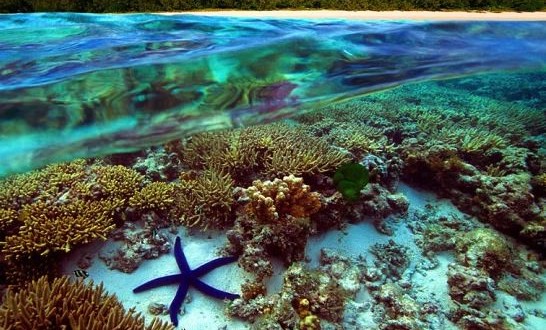A new study has revealed that land management practices need to be improved in order to prevent unnecessary sediment runoff which is affecting the Great Barrier Reef (GRB), media reported Wednesday.
The Australian Institute of Marine Science (AIMS) used a variety of new and improved techniques to analyse 10 years of satellite data of the water clarity in the reef off the Burdekin coast in Queensland, Australia, Xinhua reported.
“The study shows that large river flood events have a large impact on water quality, reaching very far off the coast and lasting several months,” said AIMS Research Programme Leader, Dr Britta Schaffelke.
The photosynthetic algae that live on corals and which gives coral reefs their vibrant colours are reliant on the Sun to survive.
Sea grasses – important food for mammals and fish – are also dependent on the Sun and a high level of sediment in the water can damage them or kill them by blocking the Sun’s rays.
Sedimentation can also physically block other marine organism’s ability to breathe. Marine plants and animals are highly sensitive to changes in water quality.
“This study shows that improved land management practices can result in a win-win outcome. The retention of nutrients, clays and fine silts in the catchments near the Burdekin River on the East coast of Australia would not only safe-guard the long-term productivity of farms, but also improve water clarity and ecosystem health in the central GBR, during the wet and dry seasons,” added Schaffelke.
The research provides a vital link between the understanding of how land use influences river loads of nutrients and fine sediments and the current scientific knowledge of the importance of water clarity for marine organisms.
The Great Barrier Reef is the world’s largest coral reef system composed of over 2,900 individual reefs and 900 islands stretching for over 2,300 kilometres over an area of about 344,400 square kilometres.
Agencies/Canadajournal
 Canada Journal – News of the World Articles and videos to bring you the biggest Canadian news stories from across the country every day
Canada Journal – News of the World Articles and videos to bring you the biggest Canadian news stories from across the country every day



